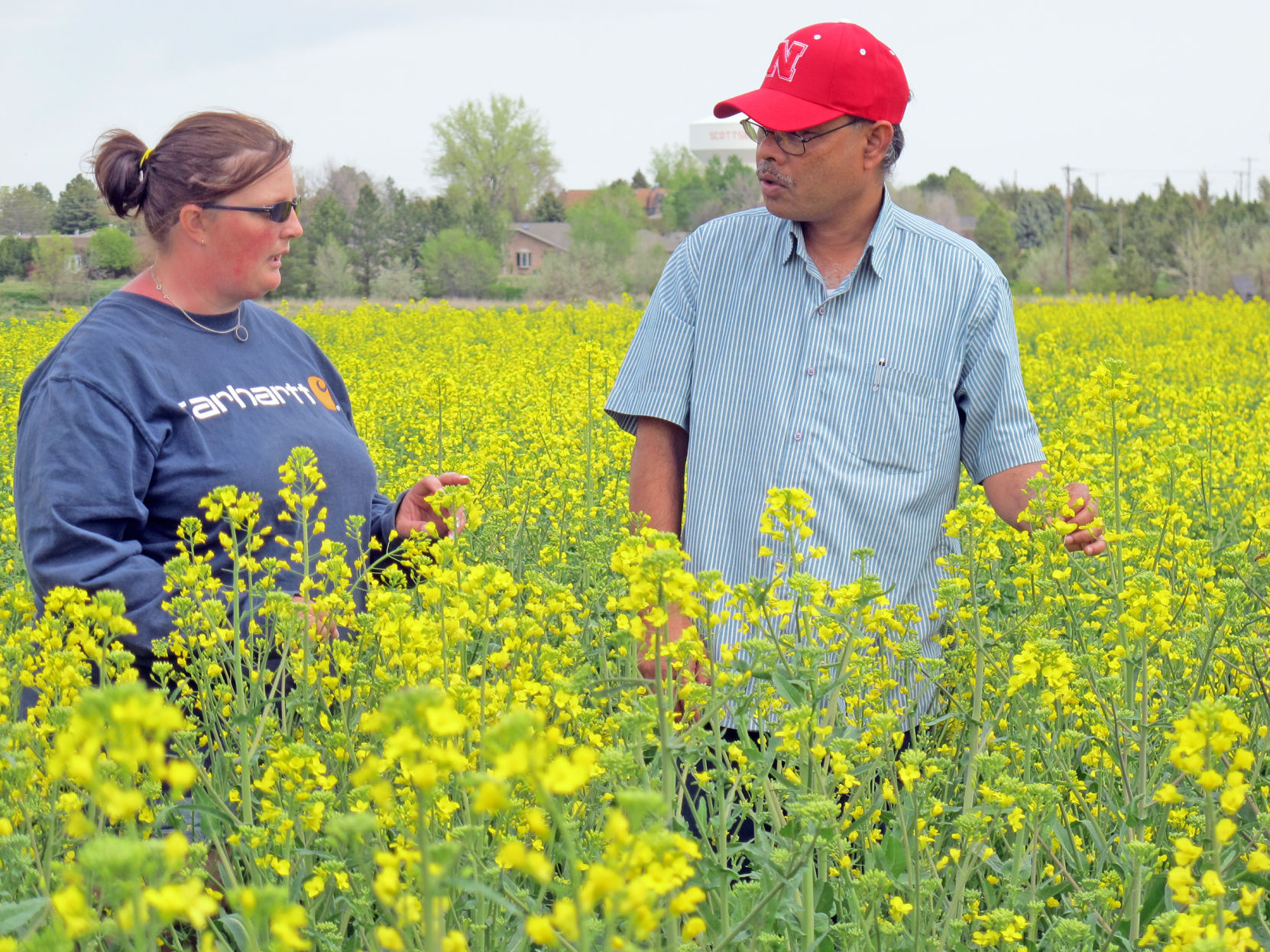Canola has found a permanent home in southern Kansas and Oklahoma but it has yet to catch on in northern Kansas and Nebraska. The main obstacle to the northern advancement of this oilseed crop is winter hardiness—but researchers at Kansas State University and the University of Nebraska are working to develop winter hardy canola varieties.
“I certainly think that over the last couple of years we have released some varieties that have the potential to over-winter in northern Kansas,” said Mike Stamm, canola breeder at K-State. “If there were producers interested in trying canola there are varieties that we can direct them to now. We have not been able to say that in the past.”
Dipak Santra, alternative crops breeder at the University of Nebraska Panhandle Research Center, has tested canola varieties for several years with plots near Scottsbluff and Sydney, Nebraska.
“In addition to general target traits like yield, plant architecture, oil content and shattering the unique trait we are looking for is winter survival in Nebraska,” Santra said. “This is our primary goal.”
Canola breeding program
The K-State canola-breeding program has released a variety named Torrington that shows consistent winter hardiness. This is a conventional variety that has been licensed to Ohlde Seed Farms in Palmer, Kansas. K-State has developed another variety that will be available this fall called HyClass 320, licensed to Croplan. HyClass 320 is a Roundup Ready cultivar with solid winter hardy characteristics. Stamm said researchers are beginning to see the benefits of their breeding program, which is the only one in the region. They have seven varieties, both Roundup Ready and conventional, on the market now and hope to have hybrid cultivars available in the near future.
Stamm added that it is not just the variety that allows for over wintering, but the environment and the producers’ management practices.
“These really work hand in hand with the variety,” he said. “Selecting a winter hardy variety is the most important decision but getting it seeded on time with the correct equipment, at optimal seeding rates and into good soil moisture all play a part in how a variety over winters.”
Santra said there are several canola varieties with decent genetics for the Nebraska environment but they might not work across the state. Most of his test plots are located near Scottsbluff. The plots are located in a valley, close to town and surrounded by tree lines, which provide them some protection during the winter months. Three years ago he moved some of the trial plots to Sydney where the field is more wide open and there are no tree lines.
“We had some failures,” Santra said. “Winter stress is different at Sydney compared to Scottsbluff, but we still had some genetics that survived in Sydney.”
Seed production
This is the second year that Shane Ohlde, Palmer, Kansas, has planted canola. So far it has been a good experience and he has had no problems with winterkill. Ohlde is growing the Torrington variety for seed production.
“It is rated No. 1 for winter hardiness which is a big item for us,” Ohlde said. “We have been watching this variety for a while to make sure we had a variety that had winter hardiness which is critical for us.”
Farmers west of Ohlde’s farm have been growing canola for several years. They are interested in canola because in recent years oil seed crops have been higher in value than wheat.
“We have been getting $8 a bushel with yields very similar to wheat,” Ohlde said. “It makes a lot of sense to go to an oil seed crop like canola as long as you have the ability to transport it.”
Stamm believes there is some profit potential with canola even though the price has come down a little along with other commodities. However, because it is an oil seed crop there have not been a lot of peaks and valleys in the market.
Right now there is no local market for canola in central or eastern Kansas. Growers are hauling directly to the crusher in Goodland, Kansas. It is the same for growers in western Nebraska.
A second barrier to canola production in Nebraska is the planting date. Santra said canola should be planted at least two weeks prior to the first frost in Nebraska. That is normally around the middle of August when there is not much soil moisture available for growing plants. Early growth for canola plants is directly related to their winter survival. In order to have good winter hardiness the plants need to reach a certain growth stage before winter arrives.
“We are trying to develop a cropping system that provides winter protection for the canola plants,” Santra said. “We are working hard to solve that problem so farmers have some options.”
Winter hardy canola varieties are coming along at just the right time as producers look for profitable alternatives to wheat production.
Doug Rich can be reached at 785-749-5304 or [email protected].



